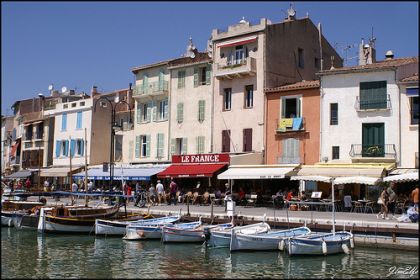Getting from London to the South of France
 With azure waters, plenty of sunshine and hoards of bikini clad babes, it is no wonder that many flock from London to the South of France year round, but especially in the summer. Boasting some of the Best Beaches in France, heading to the French Rivera this summer can be a great way to soak up some rays and take a break from it all.
With azure waters, plenty of sunshine and hoards of bikini clad babes, it is no wonder that many flock from London to the South of France year round, but especially in the summer. Boasting some of the Best Beaches in France, heading to the French Rivera this summer can be a great way to soak up some rays and take a break from it all.
Throughout the year, it is easy Getting from London to Paris and Getting from Paris to the South of France. Now, traveling (by train at least) has gotten even easier with the announcement that Eurostar will now be operating direct service from London to the South of France July through September—meaning you can be whisked by high-speed train from the center of London all the way to sunny Avignon in no time.
Here is a run-down on the ways to get from London to the South of France:
By Train
I’ve said it a million times and I’ll say it again. Train travel in France is almost always the way to go. With many high-speed TGV lines connecting the major cities in France and whisking passengers at almost 200 mph, taking the train is almost always faster than driving in France.
Now, getting from London to the South of France has gotten even more convenient with the announcement of a new Eurostar high-speed train which will run directly from London’s city center to Avignon in the South of France starting July 11, 2009-September 11, 2009. The Eurostar service will depart on Saturdays at 7:09am arriving in Avignon at 2:13pm; a journey time of a little over seven hours, enabling passengers to breakfast in London and lunch in the sunny south of France.
Direct return trains depart from Avignon on Saturdays at 4.09pm and arrive in London at 9.30pm. Both the outbound and inbound journeys stop at Ashford International.
If you are traveling from London to the South of France during the non-summer months, taking the train is still a great way to travel between the two locations. All you have to do is board a Eurostar train from London to Paris. From Paris, there are TGVs (Train à Grande Vitesse or High Speed Train) to Avignon, Marseille, Nîmes, Montpellier, Perpignan, Lyon, Bordeaux, Rennes or Nantes.
More about traveling to the South of France:
- Taking the Eurostar train between London and Paris
- Getting from London to Paris
- Getting from Paris to the South of France
- Train Travel in France
- Getting from Paris to Nice
- Deciphering French Train Travel
By Plane
If you aren’t going to opt for taking the train from London to the South of France, flying is another good option. While traveling by train is the fastest way travel from London to Paris, you can actually save time by opting to fly from London to the South of France.
There are several airports in France in the south, which serve both international and domestic carriers. Ryan Air and Easy Jet (discount airlines) often have low fares for flights between the UK and the South of France.
Airports in the South of France:
- Marseille (MRS)
- Nice (NCE)
- Toulouse (TLS)
- Nantes (NTE)
Once you know which airlines fly into which airports, it shouldn’t be too difficult finding an affordable flight to France. Flying also allows you to eat breakfast in London and have lunch in the South of France, an added to bonus to flying from London to the South of France.
By Car
Driving from London to the South of France is definitely not the way to get between these two areas unless you plan to spend significant time stopping off and spending time at locations in France along the way.
While driving in France can be quick on the autoroutes if you chose to rent a car in France, it is just not practical to drive from London to the South of France. Not only will it take you a whole lot longer than flying or traveling by train (the drive takes 7-9 hours), but you’ll end up spending as much if not more for transporting your car through the chunnel or across the channel by ferry. In addition, because the Brits and French drive on opposite sides of the car/road, any rental car you pick up in London will probably not be great to have in France. You’ll also have to pay fees to get your car through the chunnel (usually about £50 each way) or on a ferry to cross the Channel.